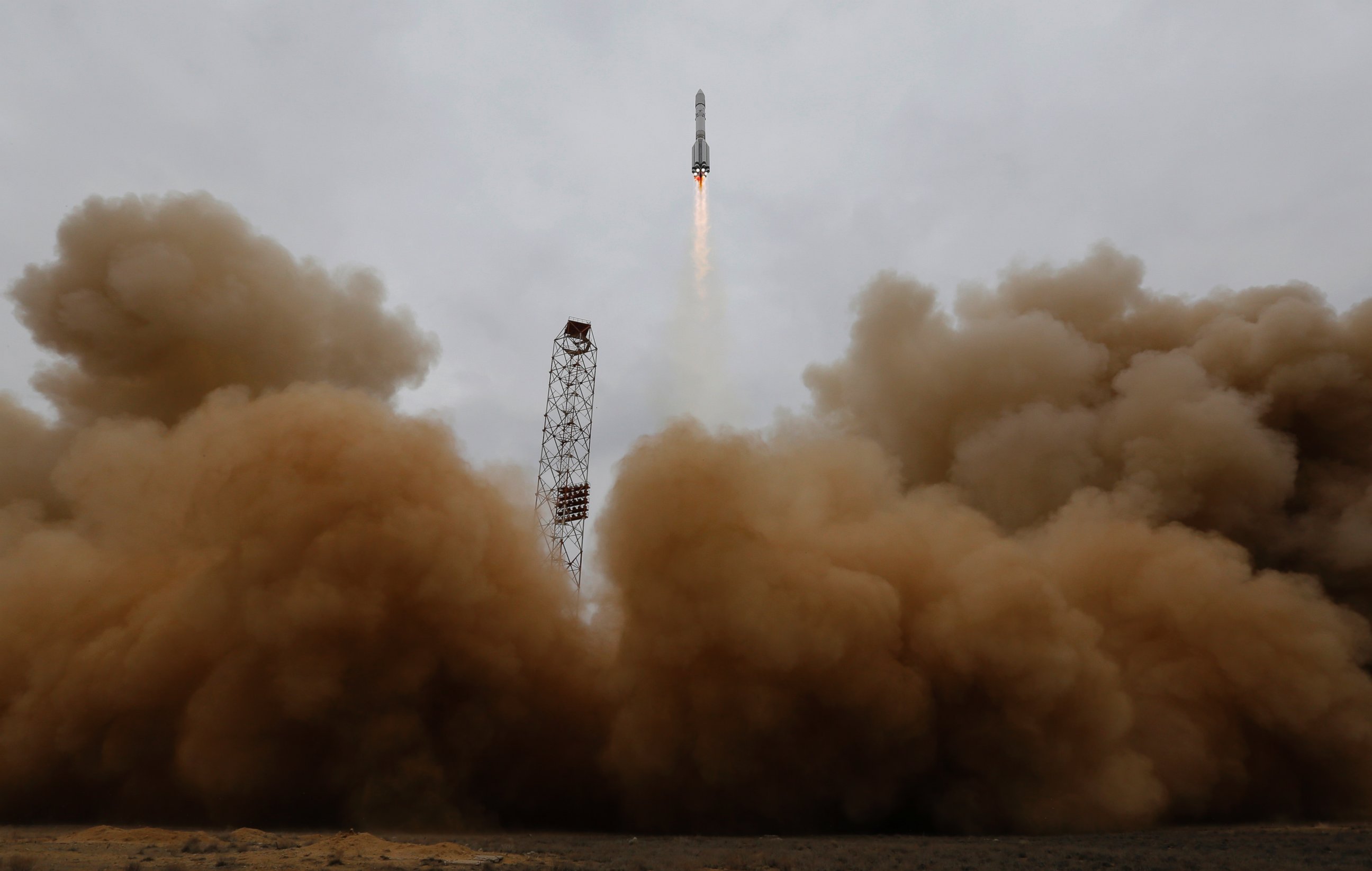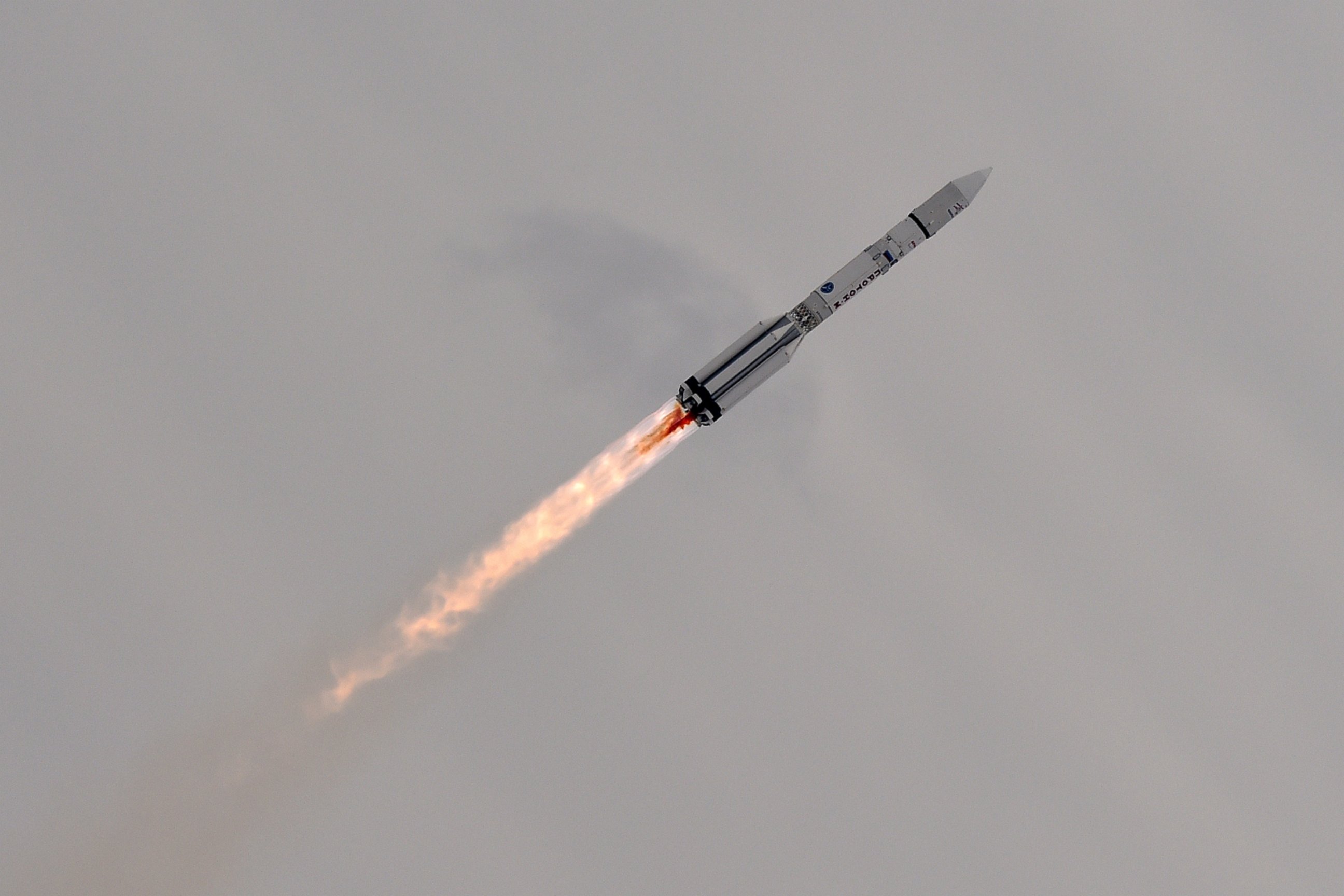Mars Probe Launches on Mission to Find Signs of Life
It will take ExoMars seven months to reach the Red Planet.
— -- A Russian rocket carrying a European orbiter and an experimental landing vehicle blasted off from Kazakhstan today on a seven-month journey to reach Mars, where it will begin the first phase of its mission to search for signs of past or present biological activity on the Red Planet.
The European Space Agency and Roscosmos, the Russian space agency, are partnering on the two-part ExoMars mission, which will include a second launch in 2018.
Today's launch included the ESA's Trace Gas Orbiter, a tool designed to detect methane and other gases in the martian atmosphere that could indicate signs of past or present life. Also on board is the Schiaparelli lander, which will be used to test technology needed for a more advanced rover that will be sent in 2018.
ExoMars is scheduled to reach its destination on Oct. 19, at which point the Trace Gas Orbiter will fire its engines for two hours to enter an elliptical orbit around the Red Planet. The orbiter will take inventory of Mars' atmospheric gases and try to understand whether traces of methane that have been detected on Mars since 2003 are coming from a geological or biological sources, according to the ESA.

It will also image the surface of Mars and search for water ice on or just below the surface.
Meanwhile, the battery-powered Schiaparelli lander will descend onto the Martian surface to test key landing technologies in preparation for future missions. When the next phase of the mission launches in 2018, a more sophisticated rover with a drill and science instruments will be sent to Mars for more in-depth scientific research.





